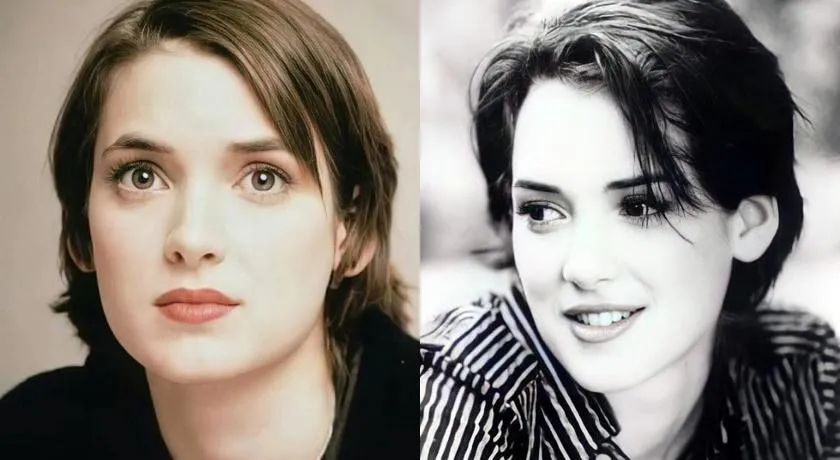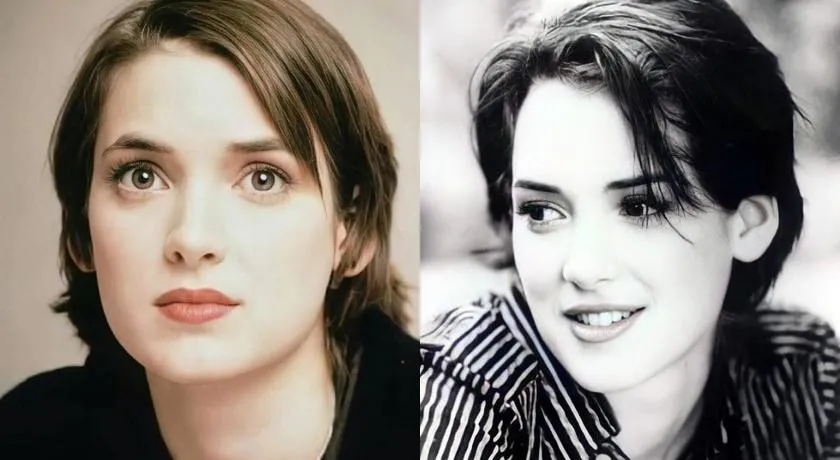Winona Ryder deepfakes
Deepfake technology, which allows people to create realistic fake videos and images, has taken the digital world by storm.

- Alexander Reed
- 7 min read

How Deepfakes Challenge Winona Ryder’s Identity
 Deepfake technology has taken the digital world by storm. This tech lets people create realistic fake videos and images. The implications are huge, especially for identity and reputation. Imagine seeing a video of yourself doing something you never did. Scary, right? Winona Ryder knows this all too well. As a famous actress, Winona Ryder has faced challenges with deepfakes. These fake videos can damage reputations and create chaos. The rise of deepfakes highlights the need for solutions to protect identities.
Deepfake technology has taken the digital world by storm. This tech lets people create realistic fake videos and images. The implications are huge, especially for identity and reputation. Imagine seeing a video of yourself doing something you never did. Scary, right? Winona Ryder knows this all too well. As a famous actress, Winona Ryder has faced challenges with deepfakes. These fake videos can damage reputations and create chaos. The rise of deepfakes highlights the need for solutions to protect identities.
Understanding Deepfake Technology

Definition and origin
Deepfakes are digital creations that blend real images and sounds to produce fake content. The term “deepfake” combines “deep learning” and “fake.” Deep learning is a type of artificial intelligence that learns patterns from data. People first noticed deepfakes around 2017 when they appeared on online forums. The technology has since evolved rapidly.
How they are created
Creating a deepfake involves using AI algorithms. These algorithms analyze countless images and videos of a person. The AI then generates new content that mimics the person’s appearance and voice. This process requires powerful computers and lots of data. However, advancements have made this technology more accessible to the public.
The Rise of Deepfakes
Technological advancements
Technology has improved at an astonishing rate. AI systems now produce highly realistic deepfakes. Researchers continue to refine these systems for better accuracy. Despite the challenges, experts work on detection tools to identify deepfakes. Upgrading detection technology is crucial for modern verification systems.
Popularity and accessibility
Deepfakes have gained popularity due to their novelty and entertainment value. Social media platforms often showcase amusing deepfake videos. Unfortunately, not everyone uses deepfakes for fun. Some individuals create harmful content that spreads misinformation. The accessibility of deepfake tools poses a threat to media authenticity. Business leaders recognize this risk, but few have taken action. Only 29% of businesses have implemented measures against deepfakes.
Impact on Winona Ryder

Winona Ryder has become a target for deepfake creators. Some people have made videos that show Winona Ryder in roles she never played. One example includes a deepfake where Winona Ryder appears as Ava in the film Ex Machina. These unauthorized portrayals confuse audiences and misrepresent Winona Ryder’s work. Public reactions to these deepfakes vary. Some fans find the videos amusing, while others feel concerned. The media often reports on these deepfakes, which can amplify the issue. People might start to question what is real and what is fake. Winona Ryder faces challenges because of these misleading portrayals.
Personal and Professional Repercussions
Deepfakes affect Winona Ryder’s public image. Fans might see a deepfake video and believe it is real. This confusion can damage Winona Ryder’s reputation. People might think Winona Ryder participated in projects she never agreed to. The actress must work hard to maintain her true image. Addressing misinformation presents another challenge for Winona Ryder. The spread of false information happens quickly online. Winona Ryder needs to clarify what is true and what is not. This task requires time and effort. The actress must stay vigilant to protect her identity from deepfake threats.
Ethical and Legal Challenges
Protecting Celebrity Identities
Legal frameworks and limitations
Celebrities like Winona Ryder face a tough battle against deepfakes. Laws struggle to keep up with this fast-evolving technology. Many countries lack specific laws to tackle deepfakes. Existing laws often fall short in protecting digital identities. Legal experts urge governments to create new legislation. Stronger laws could help celebrities fight unauthorized use of their likenesses. The C2PA’s Initiative works on industry standards for content metadata. This effort aims to reduce misinformation. Celebrities need these standards to safeguard their identities. Without proper legal backing, fighting deepfakes becomes an uphill task.
Ethical considerations in media
Media outlets play a crucial role in the deepfake issue. Ethical journalism demands accurate reporting. Media must verify content before sharing it. Deepfakes blur the line between real and fake. Journalists face challenges in distinguishing genuine content from manipulated ones. The Icon of Transparency System by C2PA helps combat deepfakes. This system relies on strong regulatory frameworks. Governments worldwide need to support such initiatives. Ethical media practices can protect public figures from false portrayals.
Broader Implications for Society
Trust in media and information
Deepfakes threaten trust in media. People find it hard to believe what they see online. Misinformation spreads quickly through deepfake videos. Society needs reliable sources to maintain trust. The Verifiable Credentials concept enhances media authenticity. This approach offers a way to verify digital content. People should demand transparency from media outlets. Trustworthy information builds a well-informed society. Deepfakes challenge this trust, making vigilance essential.
Potential for misuse in various sectors
Deepfakes pose risks beyond celebrity identities. Various sectors face potential misuse of this technology. Political figures could become targets for deepfake attacks. Businesses might suffer from fake endorsements or statements. New legislation must address these broader implications. Principles for developing laws can guide policymakers. Society needs robust solutions to counter deepfake threats. Awareness and action can prevent misuse across different fields.
Solutions and Safeguards
Technological Measures
Detection and Prevention Tools
You might wonder how to tackle the deepfake problem. Well, technology offers some answers. Deepfake Detection Technology Upgrade highlights the need for better tools. These tools help spot fake videos before they spread. You can think of them as digital detectives. They scan videos and images for signs of tampering. This process helps keep misinformation at bay. The Detect Fakes Research Project focuses on improving these tools. The project aims to make detection faster and more accurate. You can imagine a future where deepfakes find it hard to slip through unnoticed. This tech acts like a shield, protecting identities from harm.
Innovations in AI and Security
AI doesn’t just create deepfakes. AI also fights against them. Innovations in AI bring new security measures. These measures work like a digital lock. They prevent unauthorized use of images and voices. AI learns to recognize patterns in deepfakes. This skill helps AI spot fakes quickly. Security experts work on making AI even smarter. You might see AI tools that verify digital content. These tools ensure what you see online is real. The goal is to restore trust in digital media. AI innovations pave the way for safer online experiences.
Legal and Policy Approaches
Strengthening Laws and Regulations
Laws play a big role in combating deepfakes. Ethical and Legal Implications of Deepfake Technology stresses the need for strong laws. These laws protect people from digital impersonation. Governments must act fast. New regulations should target deepfake creators. Legal frameworks need updates to match tech advancements. You might wonder how laws can help. Laws can punish those who misuse deepfake tech. Stronger regulations deter potential offenders. Legal action provides a safety net for victims. You can think of laws as a protective barrier against digital threats.
Advocacy and Public Awareness
Public awareness matters in the fight against deepfakes. Advocacy groups raise awareness about deepfake risks. These groups educate people on identifying fake content. You can join efforts to spread the word. Knowledge empowers individuals to spot deepfakes. Advocacy also pushes for policy changes. Public pressure encourages lawmakers to act. You can support campaigns that demand stricter regulations. Together, society can build a safer digital environment. Public awareness serves as a powerful tool against deepfake misuse.
Deepfakes pose a real threat to identity and trust. You see how they can damage reputations and spread misinformation. Addressing deepfake issues becomes crucial for maintaining media integrity. Trust in journalism, legal systems, and democratic processes faces challenges due to deepfakes. You need to stay vigilant and push for innovation.
- Supportive regulations like the C2PA’s system can help combat deepfakes.
- Public awareness and advocacy play key roles in this fight.
You hold the power to demand transparency and protect identities. Stay informed and proactive in tackling deepfake threats.
- Tags:
- Deepfakes Challenge
